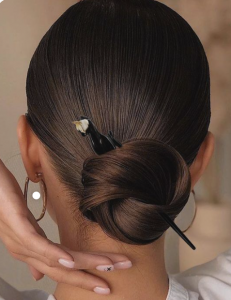Changing up your hairstyle can be a fun and exciting way to express your personality, boost your confidence, or simply try something new. But the commitment of cutting or dyeing your hair can be daunting. That’s where wigs come to the rescue! Wigs offer a versatile and non-permanent way to transform your appearance instantly. In this comprehensive guide, we’ll delve into the world of wigs, discussing how to choose the right one, how to wear it with confidence, and how to maintain your wig properly. Whether you’re looking to experiment with a new look or simply want a convenient solution for bad hair days, this article will help you master the art of wig-wearing.
1. Choosing the Right Wig.
Before you embark on your wig-wearing journey, it’s essential to select the perfect wig for your needs. There are various types of wigs, each catering to different preferences, styles, and budgets. Here are the most common types:
1.1 Synthetic Wigs: Synthetic wigs are made from artificial fibers and are pre-styled. They are generally more affordable than human hair wigs and come in a wide range of colors and styles. However, they may not look as natural as human hair wigs.
1.2 Human Hair Wigs: Made from real human hair, these wigs offer a natural look and feel. They can be styled, dyed, and treated just like your own hair. They are more expensive but are worth the investment if you want a high-quality, natural-looking wig.
1.3 Lace Front Wigs: Lace front wigs have a lace front that mimics a natural hairline, making them look incredibly realistic. These wigs are often more comfortable and breathable, but they tend to be pricier.
1.4 360 Lace Wigs: 360 lace wigs feature a lace cap that covers the entire head, allowing for various styling options. They are among the most natural-looking wigs available.
1.5 Half Wigs and Hairpieces: Half wigs, also known as 3/4 wigs, are designed to blend with your natural hair, making them a fantastic choice if you want to add volume or length to your existing hair.
1.6 Costume Wigs: These wigs are typically used for special occasions, cosplay, or themed parties. They come in a wide variety of styles and colors and are usually made from synthetic materials.
When choosing a wig, consider your budget, the occasion, and your desired look. If you want a wig that appears as natural as possible, investing in a high-quality human hair or lace front wig is the way to go.
2. Measuring for the Perfect Fit.
One of the most critical aspects of wearing a wig is ensuring it fits comfortably and securely. An ill-fitting wig can be uncomfortable and may not look as natural. Here’s how to measure for the perfect fit:
2.1 Measure Your Head: Use a flexible measuring tape to measure the circumference of your head. Start at your hairline in the front, go behind your ear, and finish at the nape of your neck. Note down the measurement in inches.
2.2 Determine Your Cap Size: Most wig manufacturers provide a size chart that correlates head measurements to wig cap sizes. Consult the size chart to find the appropriate cap size for your head. Common cap sizes include petite, average, and large.
2.3 Choose the Right Style: Different wig styles require different cap constructions. For instance, if you plan to part your hair in various ways, a full lace wig may be the best choice. Lace front wigs are great for a natural hairline. Consider your desired look when choosing the cap style.
3. Preparing Your Natural Hair.
Before putting on your wig, it’s essential to prepare your natural hair to ensure the wig fits comfortably and looks as natural as possible:
3.1 Gather Your Hair: If you have long hair, gather it neatly into a low bun or ponytail at the nape of your neck. For shorter hair, simply comb it back and secure it with bobby pins.
3.2 Use a Wig Cap: To keep your natural hair in place and create a smooth surface for the wig, wear a wig cap. Wig caps come in various colors to match your skin tone and hair color. Tuck in any stray hairs to create a clean base.
3.3 Secure Your Wig Cap: Use bobby pins to secure the wig cap in place. Make sure it’s snug but not too tight to avoid discomfort.
4. Putting on the Wig.
Once you’ve selected the right wig and prepared your natural hair, it’s time to put on the wig:
4.1 Adjust the Straps: Most wigs have adjustable straps at the back. Before putting on the wig, adjust these straps to fit your head comfortably. You may also find clips or combs inside the wig that can help secure it in place.
4.2 Hold the Wig at the Front: Place the wig on your head, aligning the front with your natural hairline. Gently pull the wig over your head, making sure it covers the wig cap and your natural hair.
4.3 Secure the Wig: Once the wig is in place, secure it using the straps, clips, or combs. Ensure it’s snug but not too tight to avoid discomfort.
4.4 Style as Desired: Style the wig as you like, whether it’s straightening, curling, or simply arranging it to your preferred look.
5. Blending Your Wig.
For a truly natural appearance, you’ll want to blend your wig with your natural hair:
5.1 Choose a Wig Color: Select a wig color that closely matches your natural hair color. If your hair is dyed or highlighted, consider getting a wig with similar highlights or lowlights for a seamless look.
5.2 Blend Your Edges: To make the wig’s front blend seamlessly with your natural hairline, use a makeup brush or your fingers to apply a bit of foundation or concealer that matches your skin tone along the lace front.
5.3 Style Your Natural Hair: If your natural hair is peeking out from under the wig, style it in a way that complements the wig’s look. You can use heat tools, hair accessories, or scarves to achieve a harmonious style.

6. Maintaining Your Wig.
Proper maintenance is crucial to keep your wig looking its best and prolong its lifespan. Here are some tips for maintaining your wig:
6.1 Wash Your Wig: How often you should wash your wig depends on how frequently you wear it. Generally, washing it every 10-15 wears is a good guideline. Use a wig-specific shampoo and conditioner and follow the care instructions provided by the manufacturer.
6.2 Store Your Wig Properly: When you’re not wearing your wig, store it on a wig stand or in its original packaging to maintain its shape and prevent tangling.
6.3 Protect Your Wig: Avoid exposing your wig to excessive heat, such as from hair dryers or curling irons, as this can damage the fibers. Be mindful of cooking in the kitchen as well, as heat from stovetops can also be harmful.
6.4 Brush Your Wig: Use a wig brush or a wide-tooth comb to detangle your wig gently. Start at the ends and work your way up to avoid damaging the fibers.
6.5 Avoid Friction: Be cautious of friction, such as wearing rough scarves or collars that can cause friction with the wig and lead to matting.
6.6 Rotate Your Wigs: If you wear wigs regularly, consider having multiple wigs to alternate. This allows each wig to rest and prolongs their lifespan.
All in all.
Wearing a wig offers endless possibilities for changing your look whenever the mood strikes. With the right wig selection, proper fitting, and careful maintenance, you can enjoy a natural, versatile, and stylish appearance without committing to permanent hair changes. So, whether you’re looking to experiment with different styles or simply want a quick and convenient solution for a bad hair day, follow this comprehensive guide to become a wig-wearing pro and shake up your look whenever you desire.
















